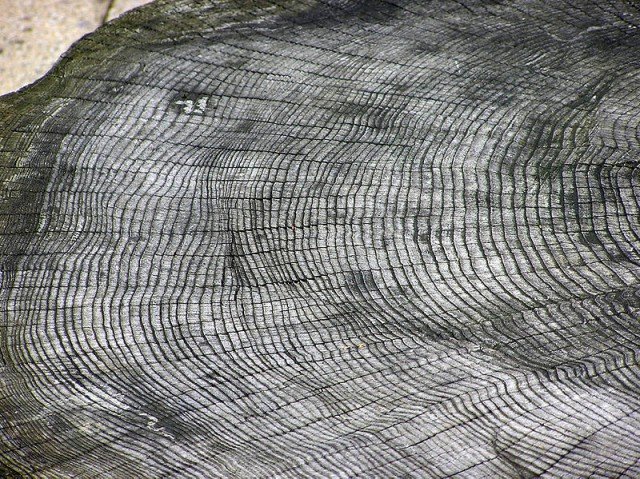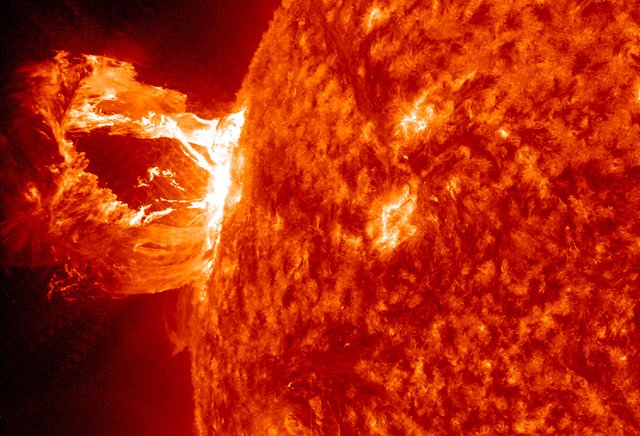Giant cosmic explosion from 774 AD left traces only in two cedar trees rings
Scientist Fusa Miyake from Nagoya University, Japan, studied the growth rings of two trees dating back 1,200 years and discovered that an explosion of epic proportions occurred between 774 and 775AD.
However, there is no record of something happening in our skies in that period – except perhaps for one tiny, obscure account by a 13th-century historian.
The problem is that there should be a record.
If this was a supernova – a star exploding deep in space – we should either be able to spot the remains with modern telescopes, or find visual accounts in the written accounts of Chinese and European historians.
To get the technical details out of the way first: Trees capture particles from the atmosphere during photosynthesis, and one particle that gets buried within the annual growth rings is carbon-14.
Carbon-14 forms when cosmic rays – generally caused by massive solar flares, or by supernovae – interact with nitrogen and oxygen in our atmosphere.

Fusa Miyake studied the growth rings of two trees dating back 1,200 years and discovered that an explosion of epic proportions occurred between 774 and 775AD
In the two cedar trees – and doubtless many other tree records from the period – there was a giant increase of 1.2% of carbon-14.
In comparison, the annual variation of the captured isotope is just 0.05%, making this more than a 20-fold increase.
In recorded history, at least two supernovae have exploded in the skies visible from Earth, their light travelling across light-years to hit the eyes of humans.
In 1006 and 1056, two stars went nuclear – at least, the light from their deaths arrived on Earth in those years.
Both explosions resulted in “stars” that were visible in the daytime for weeks afterwards, and were recorded around the world.
Yet even such giant events, which impacted on those who saw them enough that the records survive to this day, were not powerful to result in much of a variation in the carbon-14 levels.
So the 774AD explosion must have been on a scale much bigger.
But if a supernova had exploded of a force even just equal to the other two witnessed supernovae, we should be able to witness gas remnants – the corpse of the star – in space. But there is nothing in the skies to suggest this.
The only contemporaneous record is from a 13th-century English chronicler, called Roger of Wendover, who, according to New Scientist, is quoted as saying: “In the Year of our Lord 776, fiery and fearful signs were seen in the heavens after sunset; and serpents appeared in Sussex, as if they were sprung out of the ground, to the astonishment of all.”
This lends itself to just one other possibility, that of a solar flare. But if that was the case, it would be the biggest solar flare ever recorded by our sun.
And if that had occurred, it would have seriously hurt or even entirely destroyed our ozone – and at the least leaving traces that we could identify more than 1,000 years later, let alone leading to reports from all the chroniclers of the age.
Researcher Igor Moskalenko, an astrophysicist at Stanford University, California, who has followed the case but is not involved in the original study, says: “I cannot imagine a single flare which would be so bright.”
Instead, he offers his own hypothesis: “It may be a series of weaker flares over the period of one to three years.”
Other tree rings have also implied something big happened in the mid-770s, this time in the UK.
Researchers from Queen’s University Belfast, UK, also found the carbon-14 increase – but they have yet to publish their work.
Daniel Baker, a space physicist at the University of Colorado’s Laboratory for Atmospheric and Space Physics in Boulder, Colorado also told New Scientist: “The work looks pretty solid – Some very energetic event occurred in about 775.”

